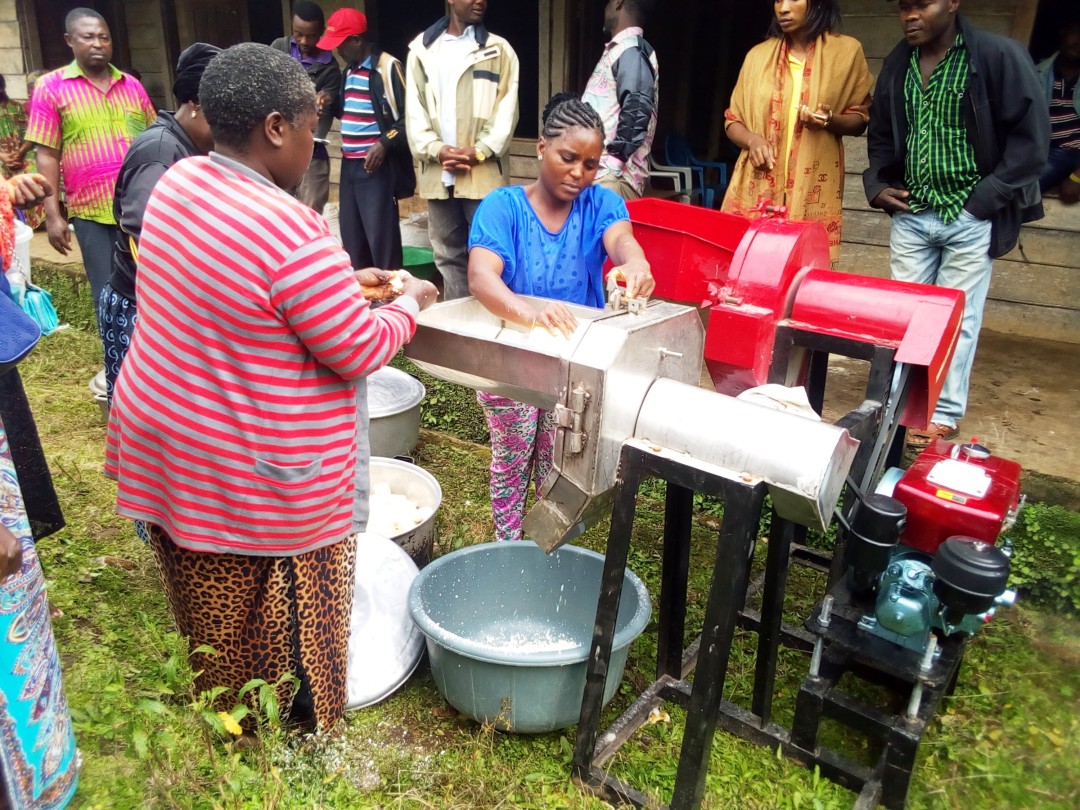Improving food security and revenues
Community Action for Development aimed to help 500 farmers from villages in Bangem to improve their food production, nutrition and revenues, while protecting the environment. Organised in ten officially registered groups, they were to be trained in sustainable agricultural practices such as organic farming, agroforestry and modern beekeeping. Farmers would receive training in group governance, leadership and financial management. Modern agricultural practices would prevent soil degradation brought about by slash and burn techniques and the reforestation of three plots of land will contribute to improved access to water and fuel wood.
By the end of the project, 477 farmers ( 243 men and 234 women) were organised in 10 officially registered farmer associations. Thanks to the training, the farmers collectively produced 248.2 tons of food, of which 100.9 tons were consumed at household level and 147.3 tons sold on, generating $ 85,390 of income. The income was used for savings, and provision of micro-loans to farmers, payment of children's school fees, ploughed back into project activites and shared among members as proceeds. Some of the farmers were beginning to engage in value addition of their farm produce to increase their income and redus post-harvest losses. In addition, 5,222 trees were planted around two degrade water catchment areas, restoring their viability and functionality.
Founded in 2003, Community Action for Development (CAD) is a Cameroonian organisation that focuses on the protection and sustainable development of rural populations, with a particular focus on women and children.
News
Three new projects validated in September and December 2017
29 January 2018
The Addax and Oryx Foundation granted funding for three new projects at its September and December Board meetings.A project completed in Cameroon
2 March 2020
The project enabled Community Action for Development to assist 477 farmers to improve their food production, nutrition and revenues.Type
Community Development / EnvironmentDuration
November 2017 - January 2020Location
Bangem / CameroonWith whom
Comminty Action for Development (CAD)
Website







Cameroon
Population
24 million ( 2017)
Per Capita Income
USD 1'370/year (2017)
Poverty rate *
37% (2014)
Literacy rate
71% (2016)
Human Development Index
151st out of 189 countries (2018)
Cameroon’s geographic diversity is favourable to economic and agricultural activity, with farming providing a source of livelihood to 70% of the population. Cameroon has achieved universal primary education and 62% of school-aged children attend secondary school. Lack of infrastructure and an unfavourable business climate have hindered a sustainable reduction in poverty, although rates have dropped from 40% (2007) to 37% (2016). Health expenditure has greatly improved, increasing from 0.9% (2006) to 5.1% (2016) of GDP being spent on public health. However, infant health and nutrition have worsened since 1990, especially in the north of the country. 32% of children under the age of five are malnourished.
Sources: World Food Program, UNICEF, World Bank, 2016 Human Development Report, Human Development Indices and Indicators (2018 Statistical Update)
*The percentage of the population living below the national poverty line.